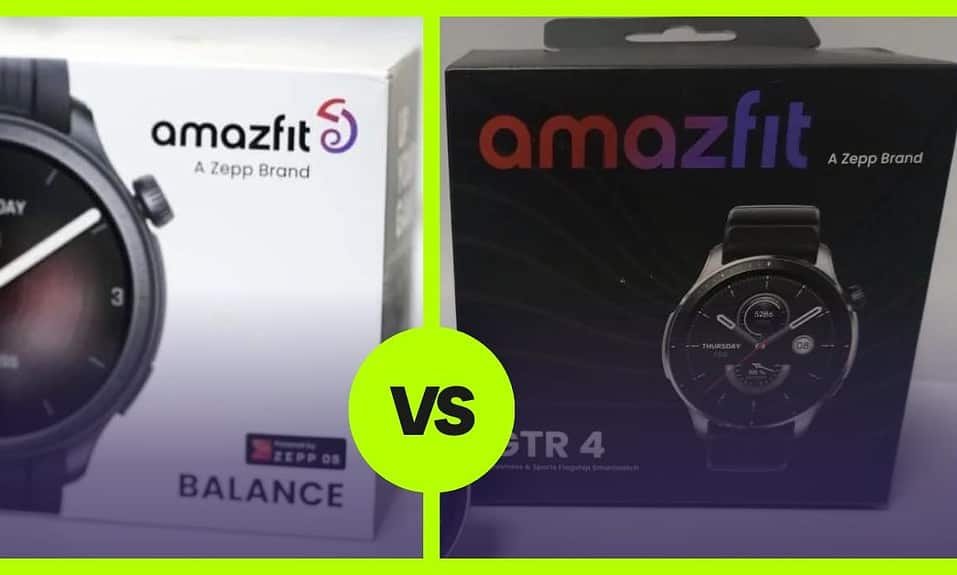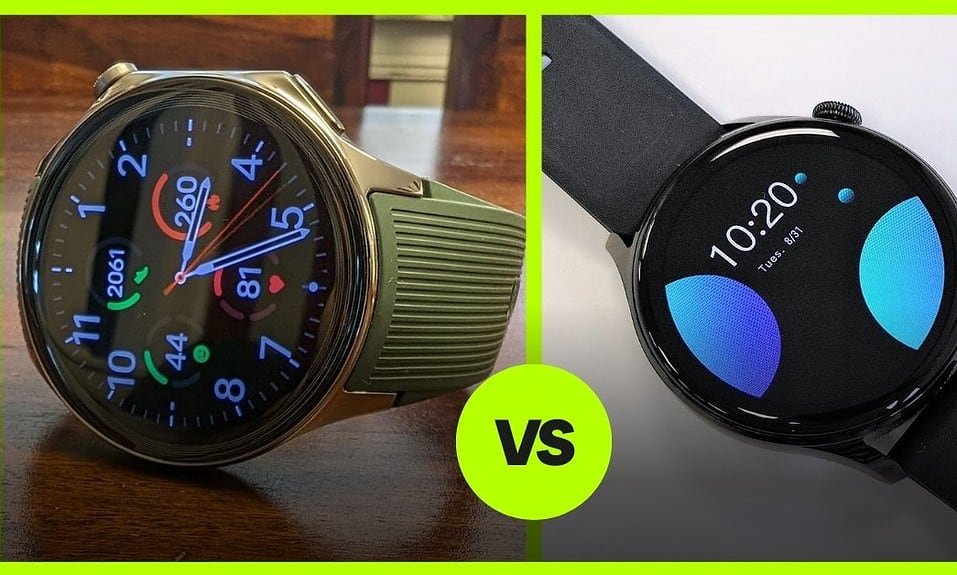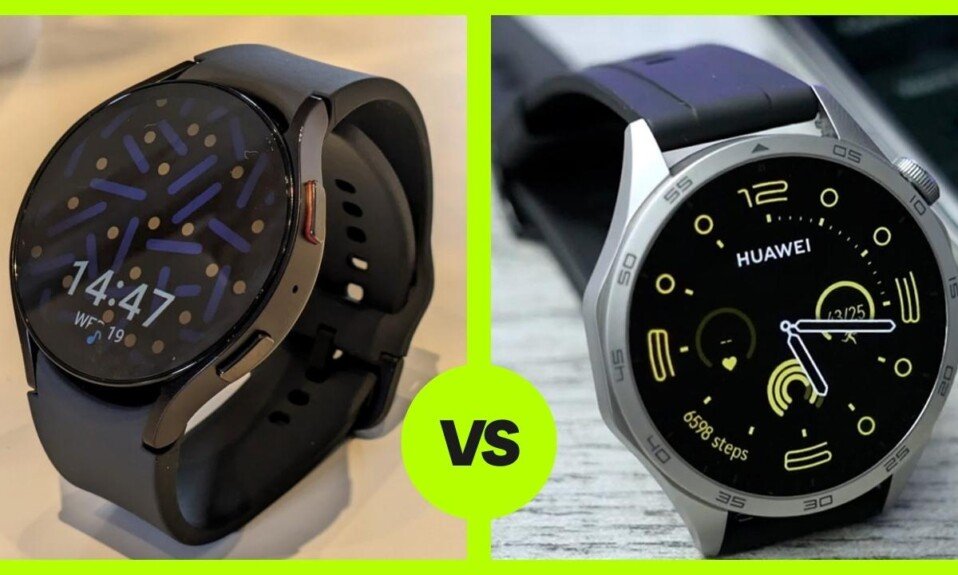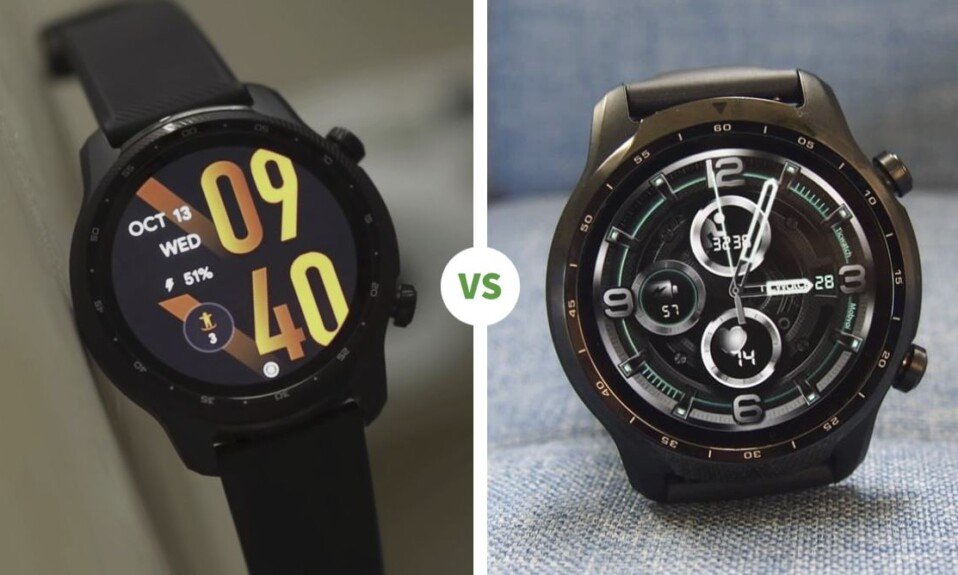Amazfit Balance vs Amazfit GTR 4. If you’re a fan of Amazfit watches and are looking to purchase a new one, you may be faced with the decision between the Amazfit Balance and the Amazfit GTR 4. While they may appear similar at first glance, there are indeed several differences between these two models.
Table of Contents
Pros and Cons
| Amazfit Balance | Amazfit GTR 4 |
|---|---|
| Advanced Health Features | Typically has a lower starting price |
| Bright, sharp touch display | Solid Health Tracking |
| Excellent battery life | Strong battery life |
| Slightly heavier than the GTR 4 | Less Advanced Health Sensors |
| Higher Price | Runs on the older ZeppOS 2.0 |
The Amazfit Balance offers 46mm case with a 1.5-inch AMOLED touch display and weighs around 35g. It’s primarily constructed from plastic with an alloy frame, giving it a lightweight yet sturdy feel. The design is sleek and modern, with two physical buttons on the side for easy navigation.

Similarly, the Amazfit GTR 4 also features a 46mm case with a slightly smaller 1.43-inch AMOLED display. It weighs just a bit less at 34g and shares a similar material composition with the Balance. Both watches have a clean and functional design, suitable for various occasions.

Common Features
Both the Balance and GTR 4 have two physical buttons on the side. The upper button is rotatable, allowing you to scroll through notifications, sport modes, or zoom in and out of your app menu. The lower button is customizable, generally set to open your workouts by default but can be linked to any app of your choice.
Design
Both the Amazfit Balance and the Amazfit GTR 4 have a similar aesthetic design, with a nearly identical box and rotating crown. However, there are subtle differences. The Amazfit Balance has a larger screen size of 1.5 inches, compared to the 1.43-inch screen of the Amazfit GTR 4. This results in a better screen-to-body ratio for the Amazfit Balance, offering a more immersive display experience.

Additionally, the Amazfit Balance has a wider bezel, allowing for a better use of space and reducing the overall frame size. In terms of weight, both watches are ultra-light, with the Amazfit Balance weighing 34 grams and the Amazfit GTR 4 weighing 35 grams.

Display
When it comes to the display, both the Amazfit Balance and the Amazfit GTR 4 feature AMOLED screens. However, the Amazfit Balance has a higher brightness level of up to 1500 nits, compared to the 1000 nits of the Amazfit GTR 4.
This means that the Amazfit Balance offers a brighter and more vibrant display, making it easier to view in bright outdoor conditions. Both watches have a similar pixel density, but the larger screen of the Amazfit Balance allows for more pixels, resulting in a crisper image quality.
Battery Life
Both the Amazfit Balance and the Amazfit GTR 4 are equipped with a 475 milliamp nominal value battery, offering impressive battery life. With regular usage, you can expect the watches to last up to 14 days on a single charge.
However, if you enable the Always On display feature, the battery life will be reduced to around 5 days. Overall, the battery performance of both watches is quite similar, providing ample usage time without the need for frequent charging.
Features
While both the Amazfit Balance and the Amazfit GTR 4 have a range of features, the Amazfit Balance offers some additional functionalities. One standout feature of the Amazfit Balance is the ability to make NFC payments directly from the watch. This feature is not available in the Amazfit GTR 4.
The Amazfit Balance also includes a readiness index, providing a morning report on your sleep quality, stress levels, breathing, and overall energy levels to help you make the most of your days. Additionally, the Amazfit Balance offers a body composition measurement, providing insights into muscle mass, fat percentage, bone mass, and other valuable health metrics. These features are not present in the Amazfit GTR 4.
Health and Activity Tracking
Both watches offer comprehensive health and activity tracking features. This includes all-day heart rate monitoring, SpO2 tracking, stress and sleep tracking, and even body composition measurements on the Balance, a feature typically seen in more advanced fitness watches.
GPS and Sport Modes
The built-in GPS on both watches is quite reliable, with various modes to balance accuracy and battery life. They offer over 150 sport modes, ranging from basic activities like walking to more specific ones like boxing or pool swimming.
Additional Differences
The Amazfit Balance also boasts the Zepp Aura functionality, which helps users relax and improve sleep quality. With Zepp Aura, you can enjoy specially designed sound spaces that emit relaxing sounds, tailored to your heart rate and personal preferences. While the Amazfit GTR 4 is compatible with Zepp Aura, it does not include the 3-month trial offered with the Amazfit Balance. Furthermore, the Amazfit Balance offers predictions for race times and supports triathlon tracking, making it a suitable choice for athletes.
The Amazfit GTR 4, on the other hand, does not provide these features. Lastly, the Amazfit Balance runs on ZeppOS 3.0 operating system, while the Amazfit GTR 4 remains on ZeppOS 2.0 with no confirmed update.
Price
In terms of pricing, the Amazfit Balance has a starting price of $229.99, while the Amazfit GTR 4, being an older model, is priced around $199.99.
Although the Amazfit Balance is slightly more expensive, it offers more advanced features and functionalities, making it a worthwhile investment for those seeking a comprehensive smartwatch experience.
Conclusion
Both the Amazfit Balance and the Amazfit GTR 4 are excellent choices for smartwatch enthusiasts. However, if you’re looking for a watch with advanced features such as NFC payments, body composition analysis, readiness index, and triathlon tracking, the Amazfit Balance is the clear winner.
On the other hand, if you prefer a more affordable option with a solid set of features, the Amazfit GTR 4 is still a reliable choice.
Here are the key differences between the Amazfit Balance and the Amazfit GTR 4 smartwatches:
- Display Size and Brightness: The Amazfit Balance has a larger 1.5-inch AMOLED touch display, compared to the 1.43-inch display of the Amazfit GTR 4. Additionally, the Balance offers a higher brightness level of up to 1500 nits, whereas the GTR 4 goes up to 1000 nits, making the Balance more viewable in bright outdoor conditions.
- NFC Payments: The Amazfit Balance supports NFC payments directly from the watch, a feature not available on the Amazfit GTR 4.
- Readiness Index: Exclusive to the Balance, it offers a morning report on sleep quality, stress levels, breathing, and overall energy levels to optimize daily performance.
- Body Composition Measurement: The Balance provides detailed insights into muscle mass, fat percentage, bone mass, and other health metrics, a feature absent in the GTR 4.
- Operating System: The Amazfit Balance runs on the newer ZeppOS 3.0, while the Amazfit GTR 4 uses the older ZeppOS 2.0.
- Zepp Aura: The Balance includes Zepp Aura functionality with a 3-month trial, offering relaxing sounds and improved sleep quality features not as comprehensive in the GTR 4.
- Triathlon Tracking and Race Time Predictions: The Balance supports triathlon tracking and offers predictions for race times, catering to more athletic users.
- Price: The Amazfit Balance is slightly more expensive, starting at $229.99, compared to the Amazfit GTR 4, which is around $199.99, reflecting the Balance’s additional features.




